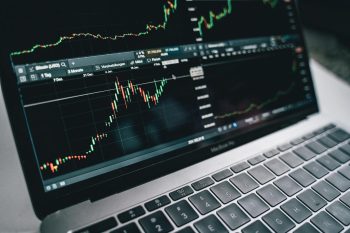Global energy markets, valued at $24.1 billion in 2024 and projected to grow to $31.2 billion by 2031, have always been influenced by weather. Solar generation depends on clear skies, wind power relies on atmospheric shifts, and extreme events—such as hurricanes or blizzards—can cause prices to surge overnight.
As demand for renewable energy grows and climate change fuels more frequent extreme weather events, the need for near-instant, hyper-accurate weather intelligence has never been greater.
Table of Contents
ToggleAI’s Growing Role in Energy Trading
AI weather forecasting is already beginning to disrupt the energy trading industry. Over the past few years, AI-powered forecasting models from companies like Google DeepMind and Huawei have emerged, often outperforming traditional meteorological models.
WindBorne Systems, a climate-tech startup, has built an AI forecasting model that is more accurate and faster than leading AI and physics-based models. The company uses a network of self-navigating weather balloons to collect atmospheric data from some of the world’s most remote and unobserved locations. This approach gives WindBorne access to a robust repository of key weather metrics.
For energy traders, AI forecasting models like WindBorne’s provide an unprecedented opportunity to make smarter, faster decisions in a volatile market—potentially leading to significant financial gains.
Challenges With Traditional Forecasts
Weather is critical in energy trading, affecting supply and demand. Solar and wind energy production depends on accurate weather forecasts, while extreme temperatures and storms drive energy consumption, leading to price fluctuations.
Modern meteorology relies heavily on publicly available data, much of which is collected from weather balloons and satellites. However, traditional balloons remain aloft for only a few hours, often landing before they can traverse large oceanic or polar regions. During hurricane season, this results in under-sampling key areas, such as the mid-Atlantic.
For decades, traders have relied on these limited forecasting models. For example, long-range forecasts from the National Oceanic and Atmospheric Administration are updated only four times daily, leaving traders with a lag in responsiveness to fast-changing weather conditions.
Advancing Forecasting Technology
WindBorne’s technology aims to close both forecasting and atmospheric data gaps.
The company’s key innovation lies in Atlas, a constellation of proprietary Global Sounding Balloons, which provide real-time atmospheric data worldwide. These lightweight, self-navigating balloons can collect data from remote areas, including oceans, where traditional weather balloons cannot reach. By intelligently surfing wind currents, the balloons gather repeated vertical profiles and can collect up to 50 profiles per flight—a process lasting more than 50 days and spanning thousands of miles.
“WindBorne’s mission is to revolutionize how we understand and act on atmospheric data,” CEO John Dean said. “When it comes to energy trading, data is power, and we have comprehensive data sets from some of the world’s most remote locations, including above oceans, where hurricanes and storms tend to form.”
The data collected by WindBorne’s balloons is fed into WeatherMesh-2, the company’s proprietary AI forecasting model. Compared with traditional physics-based models and newer AI models—such as GraphCast, the Global Forecast System, and the European Centre for Medium-Range Weather Forecasts’ HRES—WeatherMesh-2 is 8% to 24% more accurate in predicting core forecasting metrics.
However, accuracy is only part of the equation. Traditional weather forecasts generated by physics-based models require significant computational power, often taking hours to process. This delay can be costly in energy markets, where even a few minutes of lag can erase profit opportunities.
WeatherMesh-2 addresses this issue. By training a transformer-based AI model on millions of historical data points and real-time feeds from its balloon network—WeatherMesh-2 can generate global forecasts much faster than conventional models. It incorporates additional data sources, such as reanalysis datasets and real-time satellite readings, and covers conditions from surface level to high-altitude winds.
For example, while NOAA updates its long-range forecasts every six hours, WeatherMesh-2 can compute a two-week forecast at 0.25 degrees in 12 seconds on a single RTX 4090. A single H100 server can generate hourly global forecasts for up to 14 days in under 10 seconds.
“Imagine knowing about a weather event that could lead to a supply disruption or demand spike four hours before the rest of the market,” Dean said. “That’s the kind of edge our technology can provide.”
Applications for Energy Traders
WindBorne’s AI forecasts offer features that directly support decision-making, including:
- Precision in renewable energy bids: Wind flow is difficult to predict. However, WindBorne’s network collects real-time wind profile data from high altitudes to the earth’s surface, providing high-fidelity wind and solar production forecasts. Traders can use these insights to optimize bids in day-ahead and hour-ahead markets.
- Forecast comparison: Traders can compare WeatherMesh-2’s predictions with other leading models to identify discrepancies and opportunities. They can also analyze historical data to spot emerging trends.
- High-resolution insights and intuitive map views: WeatherMesh-2’s visual interface allows traders to analyze data geographically. Users can zoom in or out on forecasts, from macro-level continental patterns to specific wind turbine sites. The flexibility and speed of AI inference enable traders to pinpoint localized weather risks without losing sight of the global context.
“A key element of our mission is to mitigate climate change by tackling weather uncertainty,” Dean said. “If energy traders can use our model to make more informed decisions—especially when it comes to maximizing renewable energy efficiency—we see that as a huge win for everyone.”
A Competitive Edge in Energy Trading
As AI continues to reshape industries, energy trading is no exception. Companies like WindBorne show how advanced weather forecasting can provide incremental improvements and transformative advantages. By leveraging faster, more accurate predictions, energy traders can reduce risk, capitalize on opportunities, and stay ahead of the competition.
The energy market is driven by timing and precision,” Dean said. “As AI weather forecasts become the new gold standard, we’re unlocking a future where traders can make decisions with clarity and speed that were unimaginable just a few years ago.”
Featured Image Credit: Photo by George Desipris; Pexels
















